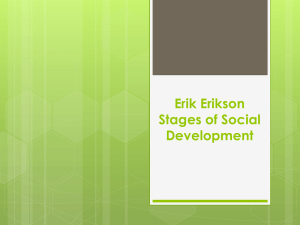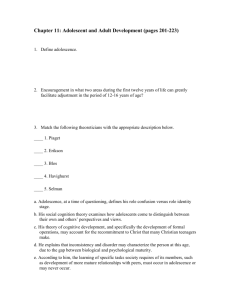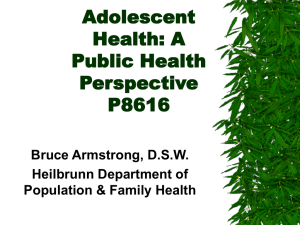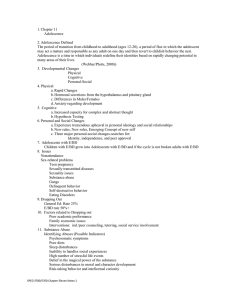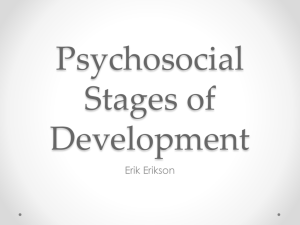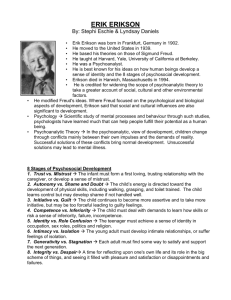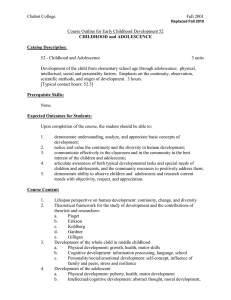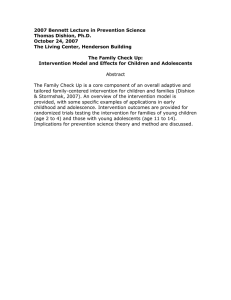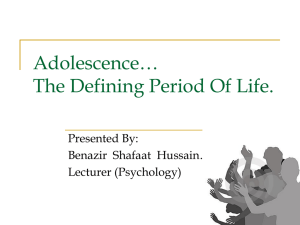Erikson*s stages of psycho social development
advertisement
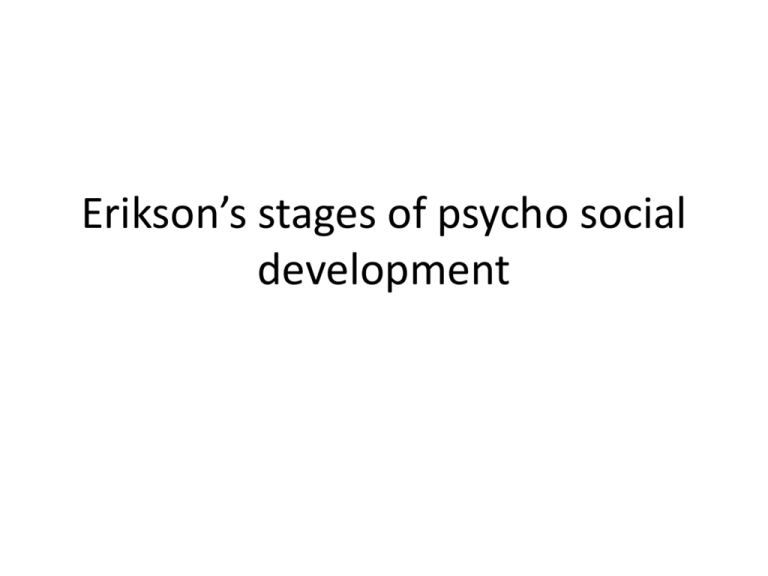
Erikson’s stages of psycho social development Warm UP • Forming an identity is a main developmental focus of adolescence. The following are major characteristics of adolescence: – Experimentation – Rebellion – “self”-ishness – Optimism • Brainstorm situations that demonstrate healthy behaviors that exhibit those four characteristics (these help adolescents develop an identity) Trust vs. Mistrust Age Birth - 18 months Importa Description nt Event Feeding Infants form a loving, trusting relationship with parents; they also learn to mistrust others. Autonomy vs. Shame and Doubt Age 18 months - 3 Years Important Event Toilet Training Description Child's energies are directed toward physical skills: walking, grasping, and toilet training. The child learns control along with a healthy dose of shame and doubt. Initiative vs. Guilt Age 3-6 Years Important Event Playing with others Description Child becomes more assertive, takes more initiative, becomes more forceful. Industry vs. Inferiority Age 6 - 12 Years Important Description Event The child must School feel competent while risking a sense of inferiority and failure. Identity vs. Role Confusion Age Important Description Event Adolescence Peers Teens must achieve self-identity while deciphering their roles in occupation, politics, and religion. Can develop negative identity. Intimacy vs. Isolation Age Young Adult Important Event Description Relationships The young adult must develop marriage-seeking relationships while combating feelings of isolation. Further career or get married? Generativity vs. Stagnation Age Importan Description t Event Middle Adult Parenting Men want to generate something (join a rock band). They risk stagnation (growing old) Integrity vs. Despair Age Importa nt Event Late Adult Life Description Acceptance of Reflection one's lifetime accomplishments and sense of fulfillment. Want control of their lives. How does this relate to adolescent development? Identity • One’s sense of self. • The idea that an adolescent’s job is to find oneself by testing various roles. • Comes from Erik Erikson’s stages of Psychosocial development. Follow up to adolescence identity development: James Marcia • Identity status involves crisis and commitment – Crisis = attempt to choose amongst meaningful alternatives – Commitment = personal investment in a task • There are 4 distinct ways that adolescents express identity formation: – Identity achievement: teens arrive at a sense of identity on their own, after considering options – Identity diffusion: lacking commitment to any goal – Moratorium: still in crisis period searching for an identity but have not come to a conclusion – Foreclosure: adolescents make a commitment without experiencing a crisis

